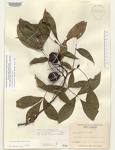False Shagbark Tree Information
Images of False Shagbark:






False Shagbark grows in the following 29 states and provinces:
Alabama, Arkansas, Connecticut, Delaware, Florida, Georgia, Illinois, Indiana, Iowa, Kentucky, Louisiana, Maryland, Massachusetts, Michigan, Missouri, Nebraska, New Hampshire, New Jersey, New York, North Carolina, Ohio, Oklahoma, Pennsylvania, Rhode Island, South Carolina, Tennessee, Vermont, Virginia, West VirginiaInformation about False Shagbark:
The Carya Glabra is commonly known as the Broom Hickory, Coast Pignut Hickory, False Shagbark, Pignut, Pignut Hickory, Red Hickory, Smoothbark Hickory, Swamp Hickory as well as Sweet Pignut Hickory.
The currently accepted scientific name of pignut hickory is Carya glabra (P.Mill.) Sweet. It is a member of the walnut family Juglandaceae. Three varieties are commonly recognized : Carya glabra var. glabra Carya glabra var. hirsuta (Ashe) Ashe Carya glabra var. megacarpa (Sarg.) Sarg. The variety hirsuta, or alternately a fourth variety identified as Carya glabra var. odorata (Marsh.) Little, is frequently considered synonymous C. ovalis, red hickory . The taxonomic relationship between C. glabra and C. ovalis is particularly difficult , and many taxonomists prefer to treat these sympatric taxa as a complex . A few authorities delineate red hickory as a separate species, C. ovalis (Wang.) Sarg. . Principal differences are in the morphology of husks or fruit; distinctions between the two entities become apparent only during the fall . Many intermediates have been reported; some authorities treat C. ovalis as an interspecific hybrid between C. glabra and C. ovata . C. leiodermis Sarg., swamp hickory, is now placed in synonymy with C. glabra . Pignut hickory hybridizes with butternut hickory (C. cordiformis) . Demaree hickory, C. X demareei Palmer, is a hybrid product of pignut hickory and butternut hickory.Pignut hickory grows from eastern Maine westward to southern Michigan, Illinois, and southeastern Iowa . It extends southward to eastern Texas, Louisiana, and Arkansas, and eastward to central Florida . It is common but not abundant throughout much of eastern North America . Pignut hickory reaches greatest abundance in the Ohio River Basin and is the most common hickory of the Appalachian Mountains . The varieties glabra and megacarpa occur sympatrically throughout most of eastern North America south to Louisiana; the variety hirsuta occurs throughout much of the Southeast .Pignut hickory codominates certain upland hardwood forests of eastern North America. Common codominants include white oak (Quercus alba) and northern red oak (Q. rubra). Pignut hickory is included as a dominant or indicator in the following community type classifications (cts): Area Classification Authority sw OH forest cts Braun 1936 TN general veg. cts Quarterman and others 1972Some of the information provided here is attributed to:Tirmenstein, D. A. 1991. Carya glabra. In: Fire Effects Information System, [Online]. U.S. Department of Agriculture, Forest Service, Rocky Mountain Research Station, Fire Sciences Laboratory (Producer). , available at the USDA Fire Effects Information System (FEIS) website